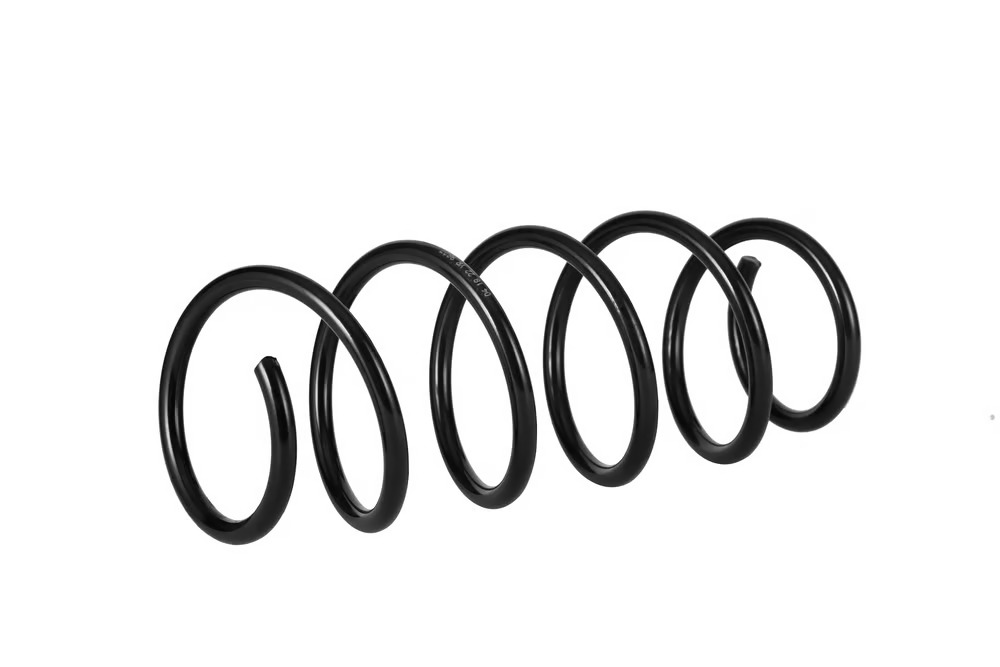Understanding Car Suspension Springs: How They Work and Why They Matter
When it comes to the smooth and safe operation of a vehicle, one crucial component that often goes unnoticed is the car suspension spring. While it may seem like a small and insignificant part, the suspension spring plays a vital role in providing comfort, stability, and control while driving. In this article, we will explore the different aspects of car suspension springs, including their function, types, maintenance, and importance in ensuring a smooth and enjoyable ride.
1. What are Car Suspension Springs?
Car suspension springs are mechanical components that are designed to absorb and dampen shocks and vibrations caused by uneven road surfaces. They are typically made of steel and are strategically placed between the vehicle's chassis and the wheels. Suspension springs work in conjunction with other suspension components, such as shock absorbers and struts, to provide optimal handling, stability, and comfort.
2. How Do Car Suspension Springs Work?
The primary function of car suspension springs is to support the weight of the vehicle and absorb the impact of road irregularities. When a car encounters a bump or pothole, the suspension springs compress, allowing the wheels to move up and down while minimizing the transfer of vibrations to the chassis. Once the wheels have passed the obstacle, the springs extend back to their original position, maintaining contact between the tires and the road surface.
3. Types of Car Suspension Springs
There are several types of car suspension springs available in the market, each offering different characteristics and performance. The most common types include:
- Coil Springs: These are the most widely used suspension springs, consisting of a helical coil of steel. They provide excellent ride comfort and can be found in most passenger vehicles.
- Torsion Bars: Torsion bar springs are generally used in trucks and SUVs. They consist of a long metal bar that twists to provide suspension support.
- Leaf Springs: Leaf springs are commonly found in heavy-duty trucks and commercial vehicles. They consist of multiple layers of steel strips stacked together and provide high load-bearing capacity.
- Air Springs: Air springs, also known as airbags, use compressed air to provide suspension support. They are commonly found in luxury vehicles and heavy-duty trucks, offering adjustable ride height and improved comfort.
4. The Importance of Car Suspension Springs
Car suspension springs play a crucial role in ensuring a smooth and comfortable ride, as well as enhancing the overall safety and performance of the vehicle. Here are some key reasons why car suspension springs are important:
- Shock Absorption: Suspension springs absorb shocks and vibrations caused by uneven road surfaces, ensuring a smoother and more comfortable ride for the driver and passengers.
- Stability and Control: Springs help maintain tire contact with the road surface, improving traction, handling, and overall stability while driving.
- Weight Distribution: Suspension springs distribute the weight of the vehicle evenly, preventing excessive weight transfer during acceleration, braking, and cornering.
- Protection of Other Components: By absorbing shocks and vibrations, suspension springs help protect other vital suspension components, such as shock absorbers and struts, from excessive wear and damage.
5. Signs of Worn or Damaged Suspension Springs
Over time, suspension springs can wear out or become damaged, compromising their performance and safety. It is important to recognize the signs of worn or damaged suspension springs to ensure timely replacement. Some common signs include:
- Uneven Tire Wear: Worn suspension springs can cause uneven tire wear, leading to reduced traction and handling.
- Excessive Bouncing or Bottoming Out: If your vehicle bounces excessively or bottoms out when going over bumps, it may indicate worn or damaged suspension springs.
- Vehicle Sagging: If one corner of your vehicle appears lower than the others, it could be a sign of a worn or broken suspension spring.
- Noise: Clunking or creaking noises coming from the suspension area can indicate worn or damaged springs.
6. Maintaining Car Suspension Springs
To ensure optimal performance and longevity of car suspension springs, regular maintenance is essential. Here are some maintenance tips to keep in mind:
- Regular Inspections: Periodically inspect the suspension springs for signs of wear, damage, or corrosion.
- Replace in Pairs: If one suspension spring needs replacement, it is recommended to replace both springs on the same axle to maintain balance and performance.
- Check Alignment: Proper wheel alignment is crucial for the longevity of suspension springs. Have the alignment checked regularly and adjust if necessary.
- Avoid Overloading: Excessive weight can put additional stress on the suspension springs, leading to premature wear. Avoid overloading your vehicle.
7. Upgrading Car Suspension Springs
For those seeking enhanced performance or specific handling characteristics, upgrading car suspension springs can be a viable option. Upgraded springs can offer benefits such as improved handling, reduced body roll, and increased load capacity. However, it is essential to choose springs that are compatible with your vehicle's suspension system and intended use.
8. Finding the Right Car Suspension Springs
When considering replacement or upgrade of car suspension springs, it is important to choose high-quality springs that are designed for your specific vehicle make and model. Consult with a trusted automotive professional or refer to the manufacturer's guidelines to ensure compatibility and optimal performance.
9. Professional Installation
While some experienced DIY enthusiasts may be able to replace suspension springs themselves, it is generally recommended to have them installed by a professional. Proper installation ensures correct fitment and alignment, reducing the risk of further damage or safety issues.
10. Conclusion
Car suspension springs may be small in size, but their impact on the overall performance, comfort, and safety of a vehicle cannot be underestimated. Understanding their function, types, maintenance, and importance allows drivers to make informed decisions regarding replacement, upgrade, and care of these essential components. By ensuring the proper functioning of car suspension springs, you can enjoy a smooth, controlled, and enjoyable driving experience.

